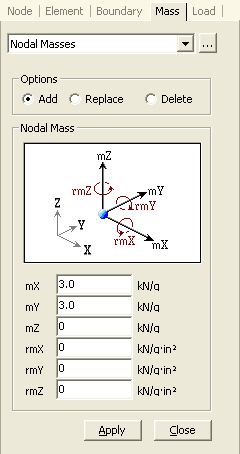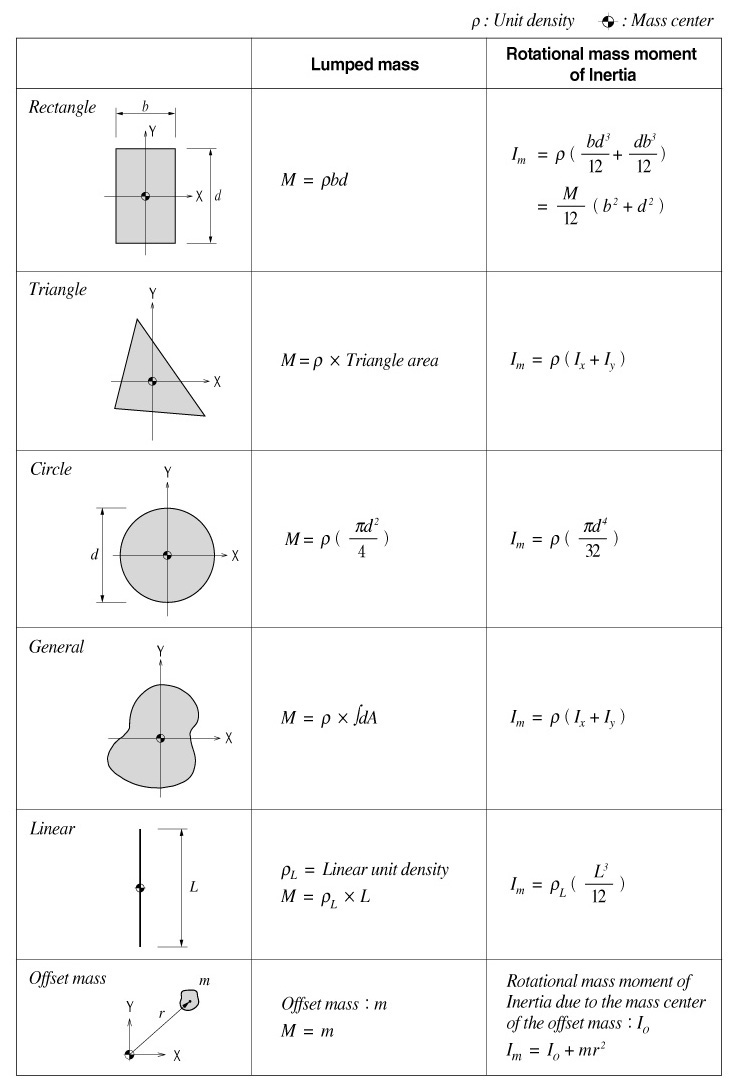Nodal Masses
| ||
|
| ||
|
| ||
|
Enter lumped mass data (Lumped Translation Mass/Rotational Mass Moment of Inertia) for nodes, or modify or delete previously entered nodal masses. | ||
|
| ||
|
| ||
|
| ||
|
From the Main Menu select Model > Masses > Nodal Masses.
Select Geometry > Masses > Nodal Masses in the Menu tab of the Tree Menu. | ||
|
| ||
|
| ||
|
Click to the right of Nodal Masses: Display the Nodal Mass Table
Note
- Lumped mass component =
- Rotational Mass Moment of Inertia =
Where, r is a distance from the center of mass to the center of a relevant mass component
The unit of a lumped mass [weight * (time2/length)] is the weight divided by the acceleration of gravity and the unit of a rotational mass moment of inertia [weight * (time2/length)] * length2] is the mass multiplied by the square of the length.
In the MKS or English unit system, the mass data must be entered as the weight divided by the acceleration of gravity. The acceleration of gravity is defined by Model > Structure Type. For reference, in the SI unit system, the unit for mass is [kg] or [ton]. The values of weights used in the MKS unit system must be multiplied by the acceleration of gravity to enter the modulus of elasticity or the loads in the SI unit system.
Method of calculating Mass data | ||
|
|

